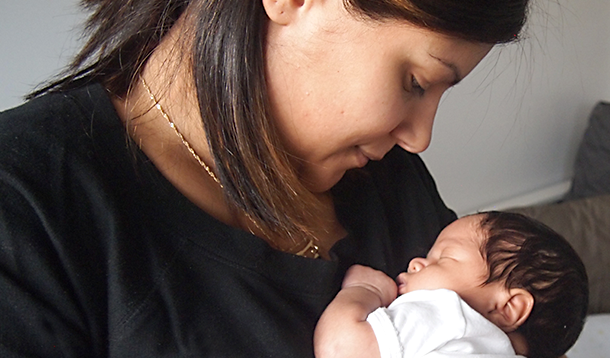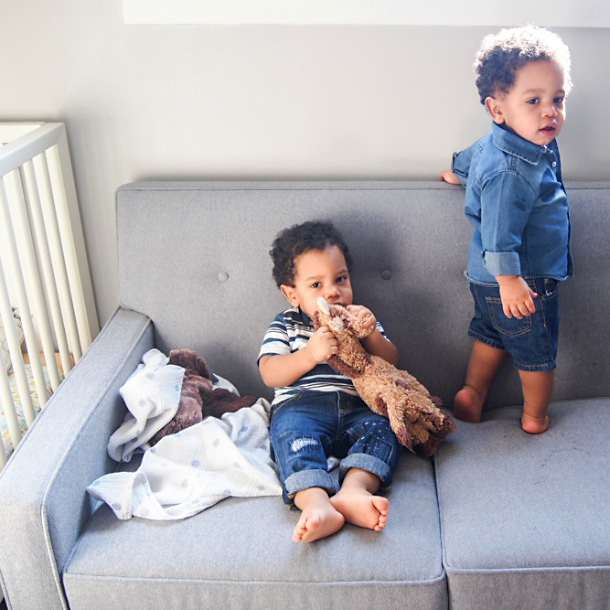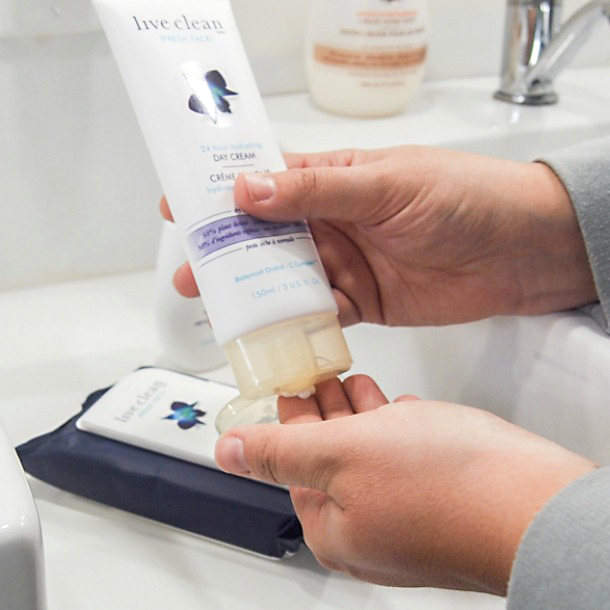
Becoming pregnant changed a lot of things in my life - like it does for all expecting and new moms. I suddenly became so aware of what I once thought were small things.
Am I eating enough healthy foods?
Should everything be organic now?
Am I drinking too much coffee?
What’s in the stuff I rub on my belly every day?
What’s in the cleaning products under my kitchen sink? (Those probably won’t be good for curious babies, right?!)
Once the babies arrived, I looked into buying all the best products I could for my twins. I researched what was going into their clothing, diapers, change pads, etc. Then I started researching the skin care products we were using on ourselves daily basis as well as the things I would be using on my babies.

I quickly learned about all the no-nos to look out for and avoid:
Parabens - These guys have estrogen-mimicking properties and they can be found in a lot of things, including food.
Synthetic colors - Look for FD&C or D&C - these represent artificial colours. The F is for food, and the D&C for drug and cosmetics. They’re linked to skin irritation and can be carcinogens.
That’s enough to make you want to run to your bathroom vanity and start reading the backs of all the bottles in there, isn’t it? Starting to read labels and becoming aware of exactly what we're buying can be overwhelming. There’s so much information out there that it can feel nearly impossible to live a life free of harsh chemicals, and it's enough to exhaust anyone. But it is possible to educate yourself and start taking small steps towards being more green and healthy. For me, I did things in steps. If you're heading down this road, too, you might find this the easiest way to get started:
I started in the kitchen. I looked at all the products under my sink and they ALL had dangerous chemicals. Did I toss them all out? Nope. I used up what I had and then looked for simple ways to replace some of those products with more natural, eco-friendly, homemade cleaners. For example: did you know that using a plastic spray bottle filled with half water and half white vinegar can be used as an all-purpose kitchen cleaner? This is now my go-to cleaner. And don’t worry - the vinegar smell goes away quickly!
Making the switch over to greener personal care products for my family was a simple one for me. Live Clean is a company that makes everything from baby products, body wash, hand soap, to hair products, and sun care. Their entire line is free from all the ingredients listed above, plus, they are all vegan or vegetarian, cruelty-free, and biodegradable.

Often times, you may buy an eco product and find that it doesn't work as well as its non-eco counterpart. But I can say from personal experience that Live Clean products perform just as well as my old favourites. I know when I reach into a drawer in our vanity and see Live Clean that it’s safe for all of us to use, it's limiting our exposure to potentially harmful chemicals, and it's healthier for the earth because they are eco-friendly and sustainable. That’s a great feeling, and bonus: they're not hard to find - Live Clean products can be found at retailers all over Canada.
Search for easy ways to use natural products in multiple ways. Coconut oil, for example, is extremely versatile. I cook with it, clean my face with it (yes, really!), and moisturize with it. There are many websites out there that give advice, some are great, some are not so great, so be sure you're taking your info from a reputable source. Here are some good sites to get you started:
Live Simply - I’ve used several recipes from this site, and they’re easy and delicious!
David Suzuki Foundation - This website is filled with tons of great info, so take your time going through it all. Be sure to check out this article all about the “dirty dozen” ingredients to avoid in cosmetics. It expands really well on the five ingredients I shared above and gives seven more.
Think Dirty App - This is a really cool app. While shopping, scan the barcode on the product you are interested in and you'll get all the information about what’s in it and whether it’s safe or not. It doesn’t get much easier, right?
Chances are, you already know someone who uses natural products and aims to be more green in their every day life. Ask them for recommendations, where they shop for products that won’t break the bank, and anything else you may be wondering about. Fellow moms are bound to be concerned about the same things as you, and they all had to start somewhere, too!
It’s never too late to start learning about ways to make your household safer, your family safer, and the earth healthier. Start out with small steps and work your way up from there. In no time, you'll be a pro at spotting a not-so-great ingredient from a mile away!
